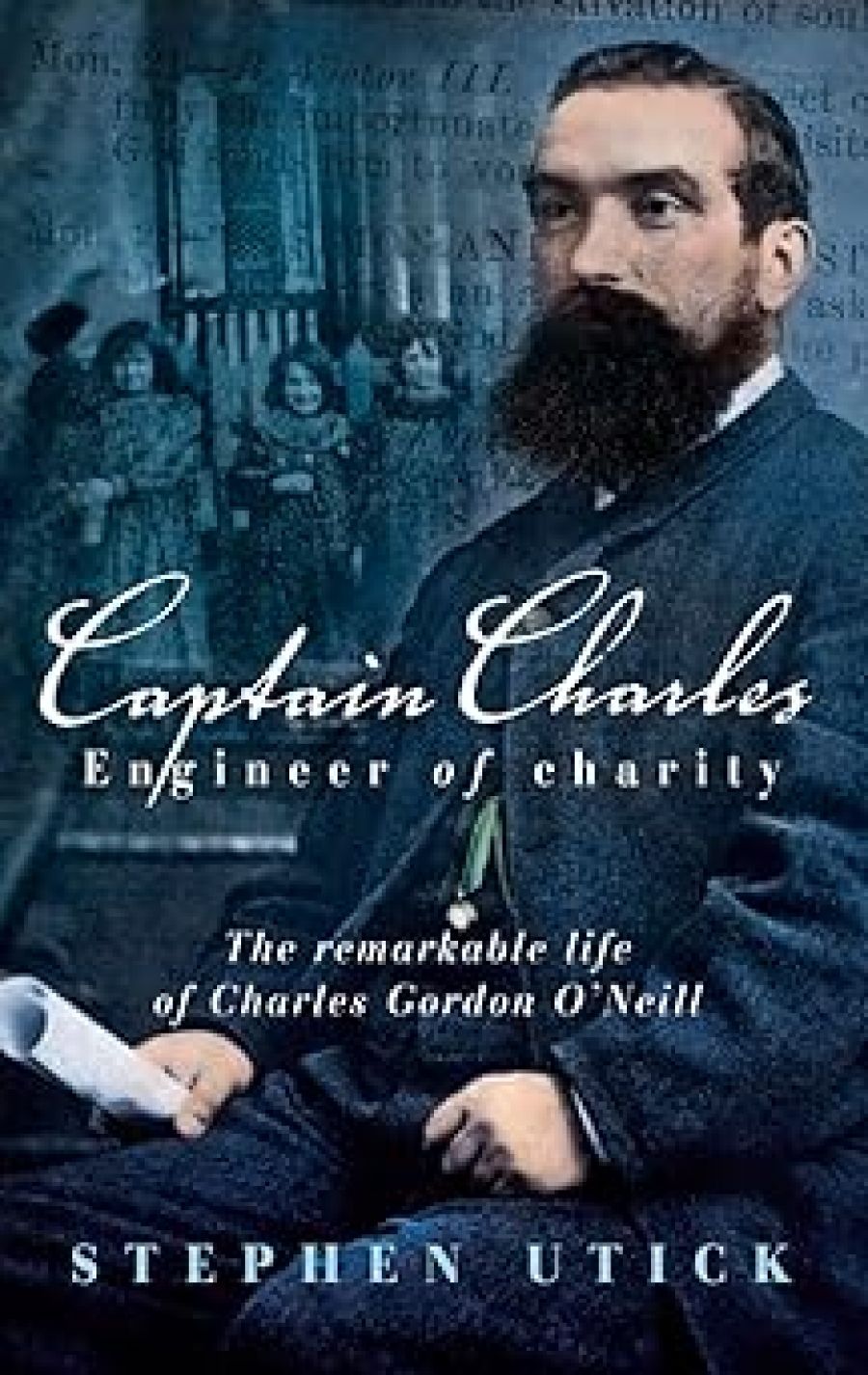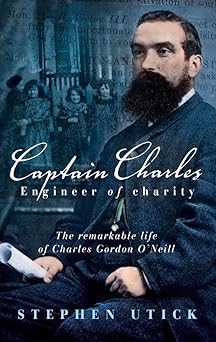
- Free Article: No
- Custom Article Title: Tragic outcomes
- Review Article: Yes
- Article Title: Tragic outcomes
- Online Only: No
- Custom Highlight Text:
In 1881 Charles O’Neill abandoned a career in New Zealand and moved to Sydney, settling in The Rocks, close to the Marist fathers at St Patrick’s on Church Hill. Soon he had gathered about him a group of men keen to do something about the poverty they saw around them under the name of the Society of St Vincent de Paul. O’Neill was then in his early fifties, having been born in 1828 in Dumbarton, Scotland, the youngest of eleven children in the family of Irish Catholic parents.
- Book 1 Title: Captain Charles, Engineer of Charity
- Book 1 Subtitle: The remarkable life of Charles Gordon O’Neill
- Book 1 Biblio: Allen & Unwin, $39.95 pb, 276 pp
- Book 1 Cover Small (400 x 600):

- Book 1 Cover (800 x 1200):

Like many fellow Scots, O’Neill migrated to New Zealand, to the goldfields of Otago. Before leaving Scotland in 1863, he had worked as a church architect, a surveyor and an engineer, skills that were somewhat interchangeable in the early nineteenth century, before formal training and qualifications in these areas were instituted. His abilities, more as a surveyor and engineer of railways and tramways than as an architect, were greatly in demand in New Zealand in the 1860s.
He quickly developed a reputation as a man who knew how to get things done, and in 1866 was elected to represent Otago in the New Zealand parliament. As a representative of the miners, he stood up for their interests, advocating health and safety measures. By 1870 he was working on the North Island and became the member for Thames on the Coromandel Peninsula, advocating better regulation of town planning and public health. His widowed father and some other family members joined him.
It is not entirely clear why Charles O’Neill began to look towards Australia during the late 1870s. Due to the vicissitudes of colonial politics, he lost his seat in parliament. His business had suffered, partly because of the time taken by politics and the unavoidable enemies he made thereby, partly also because he had never succeeded in building reserves of capital or acquiring business partners. For company and social life, he seems to have been drawn to masculine organisations such as the Glasgow Volunteers, of which he was a member before he left Scotland for New Zealand, and where he obtained the title ‘Captain’. As a young man in Scotland, he had been involved in another masculine organisation too, the French Catholic charity founded in the name of St Vincent de Paul. In New Zealand, he began re-establishing this connection. Whereas other men had families or useful and reliable business partners, Charles increasingly relied on his involvement with the St Vincent de Paul Society for friendship and meaning. Apart from a sister, there is no hint of any woman in his life.
In Scotland, his charitable work had often taken precedence over earning an income or building his business. Likewise in New Zealand, when his income began to falter, he became increasingly obsessed with the need to re-establish the Society in Australia. After his father and sister died, there was nothing to keep him in New Zealand. Although Charles succeeded in placing the Society on a firm footing in New South Wales, an unhappy involvement with a bank that failed during the financial crisis of the 1890s eventually forced his resignation from the presidency of his beloved Society. His older brother, John, for whom it seems he had always assumed a kind of responsibility, had followed him to Sydney, where they lived together in The Rocks. Charles died there in 1900, a pauper, and was buried by his friends in the Society, who erected a white marble cross at his gravesite. His brother John died about a year later. In 1961, both were re-interred in a large plot which the Society had acquired at Rookwood Cemetery for the burial of Sydney’s paupers and the memorial re-erected there.
Utick concludes that ‘ruin for Charles became a recurring, tragic outcome. As he packed up his trunk and moved on, he would, at best, become a footnote in someone else’s saga – if he was recognised at all.’ Despite this careful biography, ‘Captain’ Charles remains something of an enigma, in part because the record is so scattered and very little of it reveals anything of the man himself. Though intensive research has located several photographs and even an oil painting amid a group of Glasgow Volunteers, it is hard to read much behind the heavy beard that shrouds his face.
In addition to the public record – the political speeches, the evidence given to inquiries, the letters written on official business – there are only the letters written to his mentor in Paris, the President-General Adolphe Baudon, copies of which are now in the Archives of the Society of St Vincent de Paul. These letters speak a little of his plans and hopes. The Society also has the red cedar table at which Charles presided over its early meetings in the hall beneath St Patrick’s, and his treasured Society Manual published in 1877 and containing the rules for the association, translated from the French. In this small black book, Charles had written notes, kept records of some of his activities and pasted cuttings, so that it had become a personal scrapbook of things that had mattered to him. Utick has done well in interpreting both it and the letters to Baudon as the best available insight into O’Neill’s religious motivation. He concludes that O’Neill cannot be seen as a great leader or even a founder of the Society in the antipodes. Others had gone before and were equally important in the work. There can be no doubt, however, of the Captain’s persistence and dedication to the Society and as an inspiration to others.


Comments powered by CComment